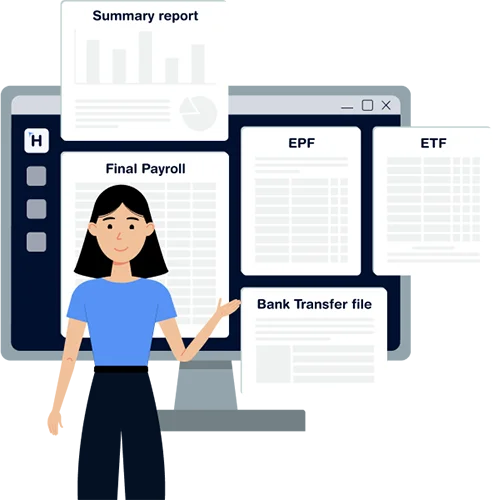Meals and Intervals Entitlement of a Shop and Office Employee
Break entitlements are a thorny issue among human resource management departments. Employees are often left feeling guilty for using their break times, having to postpone their meals when they are on a deadline or even enjoying the full break time down to the last minute. Regardless of whether you are brave enough to confront your managers about your break entitlements or not, knowing your break entitlements will let you enjoy the meal you packed from home without any guilt.
The Shop and Office Act has safeguarded the right to rest of all employees covered by the act. It states that “every person employed in or about the business of any shop or office shall be allowed intervals for meals in accordance with the regulations in the Schedule”. Now let’s get into the laws set out by the schedule.
Basic Premises for meals and intervals
“(1) Subject to the provisions of any regulation referred to in subsection (3) and subject to the provisions of subsection (5), the normal period during which any person may be employed in or about the business of any shop or office –
- on any one day shall not exceed eight hours, and
- in any one week shall not exceed forty five hours.
The period referred to in this subsection shall not include any interval allowed for rest or for a meal under any provisions of this Act or any interruption permitted by any regulation referred to in subsection”
(Shop and Office Act, section 3)
Refer to the laws explained below while keeping in mind the basic premises set out by this shop and office act as quoted above. These clauses dictate that an employee should not be employed for more than 8 hours a day excluding any meals or intervals and should not be employed a week exceeding 45 hours excluding any meals or intervals. Therefore, when calculating payroll (Employee compensation) it will not be calculated as the time worked for that day.
Schedule: Intervals for Rest or a Meal
The blue text below are the original clauses from the act itself and explanations are offered in black text right underneath when warranted
- “Where the period between the time at which any person employed in or about the business of a shop or office commences work on any day and the time at which he ceases work for that day includes the hours 11 a.m. to 2 p.m. that person shall be allowed an interval of one hour, commencing between those hours, for rest or a meal. “Where the period between the time at which any person employed in or about the business of a shop or office commences work on any day and the time at which he ceases work for that day includes the hours 11 a.m. to 2 p.m. that person shall be allowed an interval of one hour, commencing between those hours, for rest or a meal.
- Where such period includes the hours 4 p.m. to 6 p.m., that person shall be allowed an interval of half an hour, commencing between those hours, for rest or a meal.
- Where such period includes the hours 7 p.m. to 10 p.m., that person shall be allowed an interval of one hour, commencing between those hours, for rest or a meal.” (Shop and Office Act, section 1)
The above 3 clauses dictate how break times are awarded. Regardless of the start time and end time, if the workday of an employee includes any or all the time brackets mentioned above that employee is entitled to the respective break amounts.
Eg: if an employee starts work at 9.00am and finishes work at 6.00am, while complying to the maximum working hours per day of 8 hours, his workday including break times will resemble what’s below,
- Start time- 9.00am
- First break – 1 hour between 11am –2pm (1pm-2pm)
- Second break – 30 minutes between 4pm to 6pm (5pm –5.30pm)
- End time – 6.30 am
“Subject as hereinafter provided, every person employed in or about the business of a shop or office shall, on each day on which he is so employed, be allowed an interval of half an hour for rest or a meal at the termination of each period of four hours during which he has been continuously so employed:” (Shop and Office Act, section 2)
“Provided that where any such period of four hours terminates between the hours of 11 a.m. and 2 p.m., or of 4 p.m. and 6 p.m. or of 7 p.m. and 10 p.m., the interval provided in paragraph (a) or paragraph (b) or paragraph (c), as the case may be, of regulation 1 of this Schedule shall be allowed in substitution for the intervals under this regulation.”
This second main clause adds another layer of complexity to break entitlements under this act. This clause dictates that you should award a break of 30 minutes for every 4 hours of continuous work that an employee does. However, if these four hours include the time brackets mentioned in the first main clause, (11am to 2pm, 4pm to 6pm and 7pm to 10pm) the previous 3 clauses will apply. You can ignore this second main clause in such instances.
Eg: same as the above example, but break times are mentioned for clarity this time
- Start time- 9.00am
- 3 hours in between
- First break – 12pm to 1pm (1 hour between 11am –2pm)
- 3 hours in between
- Second break – 4pm – 4.30pm (30 minutes between 4pm to 6pm)
- 2 hours in between
- End time – 6.30 pm
- Total hours worked = 8 hours
In the above example, even though the time between the breaks that the employee has worked is less that 4 hours, since the 2 of the 3 time brackets mentioned in the first main clause are applied the employee has rightfully exercised his break entitlements for this workday.
For any of you who might be thinking why have a second clause at all? The first clause will make sure everybody gets proper breaks, here is an example where the second law alone can protect your right to breaks
Eg: if an employee starts work at 9.00am and finishes work at 6.00am, while complying to the maximum working hours per day of 8 hours, his workday including break times will resemble what’s below,
- Start time- 8.00pm (night)
- 4 hours in between
- First break- 12am to 12.30am (30 minutes)
- 4 hours in between
- End time- 4.30am (morning)
- Total hours worked= 8 hours
The thing is Sri Lankan law does not restrict when your workday should start or end, as long as you work only 8 hours a day and are awarded the right to breaks properly that is legitimate employment. Moreover, the first clause mainly covers the typical mealtimes of the greater human race, therefore having the second clause protects the workers who cover graveyard shifts in their workday
Other laws surrounding breaks in shop and office act
Where to take your meals?
“12 (1) No person employed in or about the business of any shop or office shall be permitted or required by the employer to live or reside in the premises thereof: Provided, however that the preceding provisions of this section shall not apply –
- in the case of any person who is a member of the family of the employer and is maintained by him, or of any other person in respect of whom a permit in the prescribed form authorizing such residence has been issued by the prescribed officer; or
- in the case of any person employed in or about the business of a residential hotel.
(2) Where any persons employed in or about the business of any shop or office takes any meals in the premises of that shop or office, suitable and sufficient facilities for the taking of such meals shall be provided and maintained by the employer
The employer cannot force or require an employee to reside in the shop or office premises unless it is a hotel. Most importantly if the employee is taking any meals in the shop or office premises, he or she should be provided with the means of taking that meal. This clause hints at a facility such as a kitchenette, cafeteria, canteen or eating hall, somewhere where you can wash your hands, sit down, and eat your meals in a clean and sanitary environment without any overcrowding. The standards you need to satisfy are not explicitly mentioned, therefore you can achieve a standard that validates basic human dignity and improve from that point on.
34 (b) an employee while present during normal meal times in a room or place in which no employment is being done shall be deemed present for a purpose unconnected with his employment”
(Shop and Office Act, pg 43)
Quoted above is another clause which helps you set up the room for meals as per legal requirements. No. 34 the clause describing the regulations on “employee waiting for employment on employer’s premises” has a sub section numbered (b), which hints that normal mealtimes should be or are preferred to be spent in a room specified for that purpose.
Special allowance of a 3-hour interval for specified professionals
“Gazette No. 314 – part 1 (4) The continuity of the normal period during which any person is employed in or about the business of any residential hotel, club, theater or other place of entertainment, or of any shop situated at an airport or of any office maintained by an airline at an airport or any boarding house or hostel attached to any educational establishment and used by the pupils of such establishment for the purpose of residing therein, on any day other than the day on which such person is allowed his weekly half holiday, may be interrupted by one interval not exceeding three hours duration exclusive of any interval for rest or for a meal allowed under the provisions of the Act.”
If you belong to any of the specified professions in the above clause, you can take one interval not exceeding 3 hours (possibly for the week). Also, this 3-hour period excludes your weekly half holiday.
While the guidelines set out by the Shop and Office Act in Sri Lanka may seem unclear and limited in scope, the working population has interpreted these laws to establish generally accepted standards of practices, which are often considered legal in most scenarios. However, it’s essential to note that Sri Lankan labor law tends to favor employees over employers. This means that as an employee, you will receive adequate cover if you are generally in the right regarding break entitlements and other labor-related matters.
On the other hand, employers can protect their interests by maintaining meticulously kept records of daily operations, including employee work hours, break times, and other relevant details. These records can serve as evidence in case of disputes or legal issues, ensuring that the employer’s rights are also upheld within the bounds of the law.
In summary, while there may be ambiguity in certain aspects of the Shop and Office Act, both employees and employers can navigate these complexities by adhering to established standards, maintaining accurate records, and seeking legal guidance when necessary to ensure fair treatment and compliance with labor regulations.



